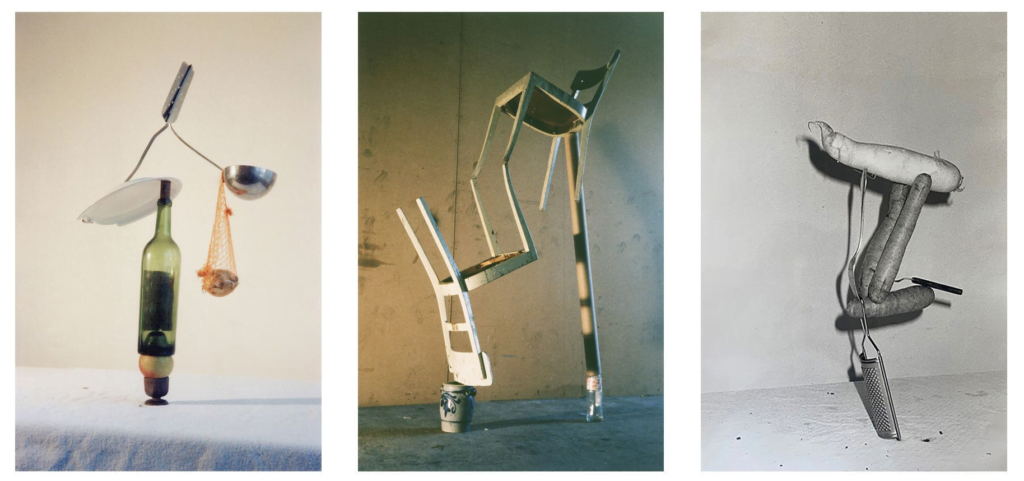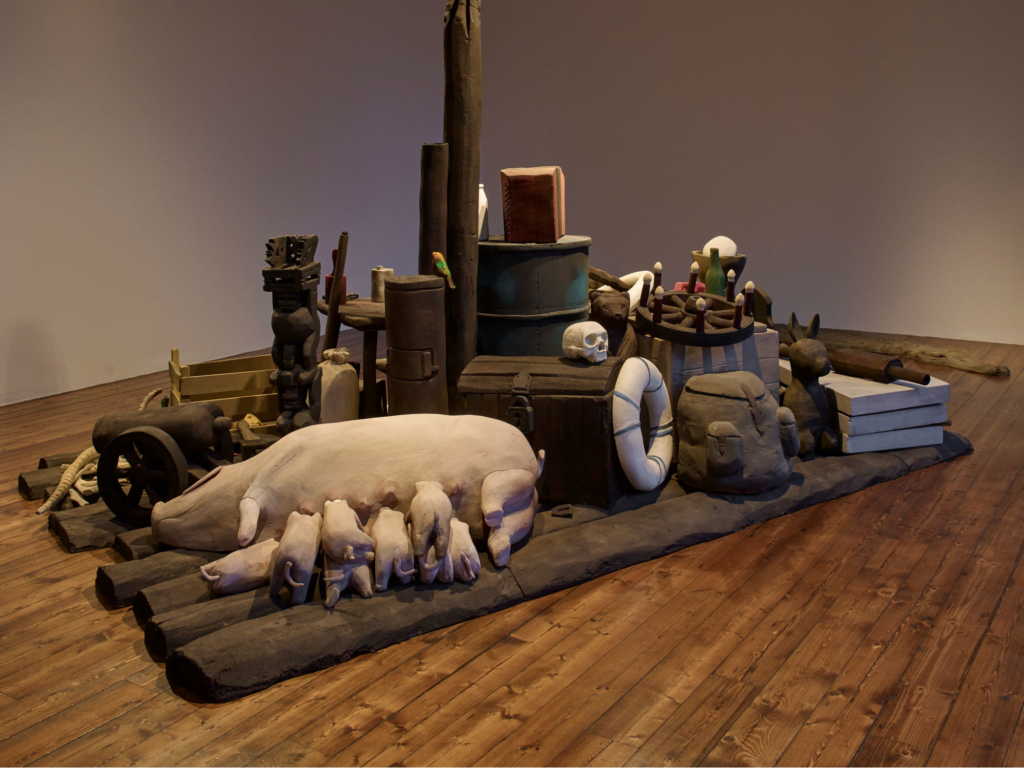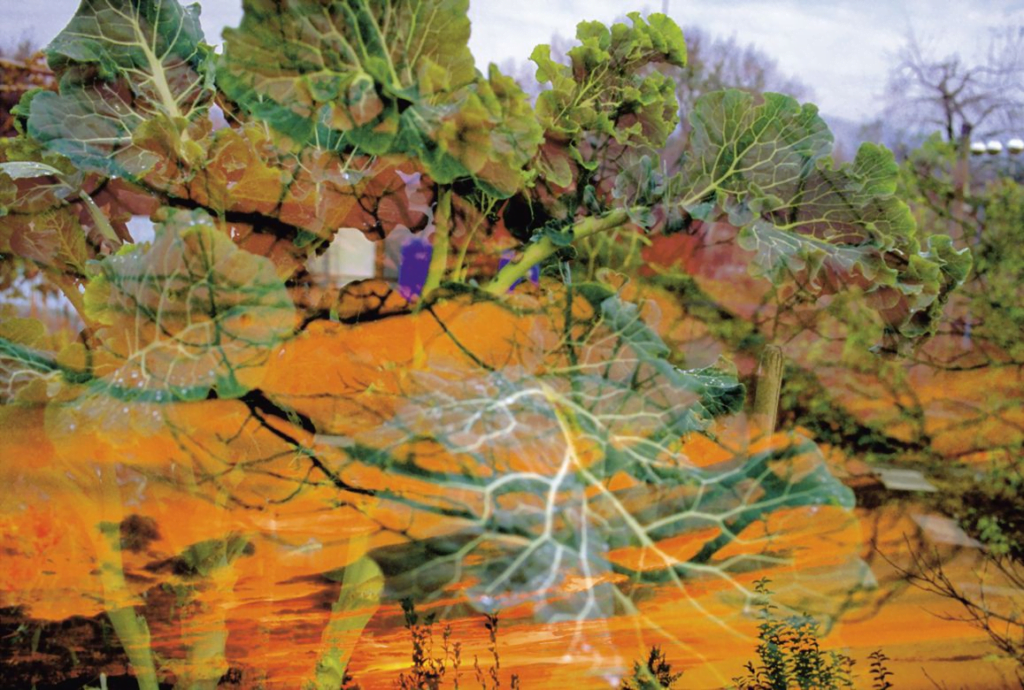Fischli & Weiss BIOGRAPHY

The Early Years: Peter Fischli and David Weiss’s Humble Beginnings
While art duo Peter Fischli and David Weiss eventually gained international acclaim for their conceptual art, their partnership began humbly in Zurich, Switzerland. In 1979, Fischli and Weiss came together as young artists looking to push the boundaries of art.
Early Experiments
They started creating quirky “sausages” and “polyurethane fossils” using everyday materials like styrofoam, polyurethane foam, and acrylic paints. These early works demonstrated their talent for transforming mundane objects into thought-provoking art.
Gaining Recognition
Their breakout work came in 1987 with “The Way Things Go,” a 30-minute film depicting an elaborate chain reaction of tumbling objects. The film earned them critical acclaim for its clever commentary on the causal relationships in the physical world.
Though Fischli passed away in 2012, the artistic legacy of Fischli & Weiss lives on. Their playful, thought-provoking works highlighting the wonder in the seemingly mundane have established them as two of contemporary art’s most imaginative alchemists. Through a shared sense of humour and curiosity, Peter Fischli and David Weiss created an artistic partnership that spanned over 30 years and produced many whimsical and insightful meditations on human existence.
What is Fischli & Weiss known for?

Known collectively as Fischli & Weiss, this Swiss artist duo spent over 30 years collaborating to create multimedia installations, films, photographs, and sculptures that explore profound ideas through humour and playfulness.
Fischli & Weiss pushed the boundaries of contemporary art through their thought-provoking and frequently whimsical installations. By transforming the banal into the beautiful and sublime, they revealed the profound wonder within the ordinary. Their perceptive and multifaceted works gave form to the human experience in all its nuance, humour and poignancy.
Career highlights

Finding Their Voice: Fischli & Weiss’s Artistic Evolution
In the late 1970s, Fischli & Weiss began experimenting with different materials and formats, moving away from traditional artistic methods. They started creating installations and short films that explored philosophical ideas and everyday objects in whimsical ways.
1981 | The Least Resistance | One of their first films featured a series of Rube Goldberg-like contraptions. These kinetic sculptures demonstrated the artists’ burgeoning interest in physical forces and the world’s interconnectedness. |
1979-1998 | “Wurstserie” or Sausage Series | These realistic but whimsical recreations of ordinary objects like sausages, bread, and cheese demonstrated the artists’ skill and humor. |
Over their 40-year collaboration, Fischli & Weiss mastered the art of visual storytelling. By exploring profound philosophical ideas in a lighthearted, accessible manner, they brought humour and wonder to contemporary art.
Their influential and imaginative work has inspired generations of artists and delighted viewers around the globe. Through constant experimentation and an ability to see the extraordinary daily, Fischli & Weiss crafted a multifaceted body of work that both provokes and entertains.
Conceptual Innovation
Fischli & Weiss were pioneers of conceptual art. Their works explored profound ideas through simple means. For example, “Equilibres” featured precariously balanced objects that meditated on themes of order and chaos. Works like “Suddenly This Overview” reimagined mundane scenes in miniature dioramas, inviting reflection on human existence and society.
Multidisciplinary Creativity
The duo brought an interdisciplinary spirit to their art. They moved freely between mediums, incorporating sculpture, film, painting, and photography in their works. This multimedia approach allowed them to explore themes in innovative ways. Photographic series like “Airports” and “Flowers/Mushrooms” used repetition and seriality to transform familiar subjects into something strange and surreal.
Fischli & Weiss List of Work

Their Magnum Opus: The Unprecedented Success of the Way Things Go
In 1987, Fischli & Weiss unveiled their most well-known work, The Way Things Go. This 30-minute film documents an enormous, sprawling Rube Goldberg machine set up in a warehouse. The device used everyday objects like tires, furniture, and trash bags in a chain reaction to create a precariously balanced, whimsical contraption.
The Way Things Go captivated audiences with its playful exploration of cause and effect, momentum, and the beauty in everyday objects. The film gained international acclaim, cementing Fischli & Weiss’ status as renowned contemporary artists. Their unconventional and lighthearted style broke from the seriousness of much of 1980s art.
Despite their avant-garde style and non-traditional materials, Fischli & Weiss’ art is highly accessible. Their playful, curious sensibility taps into viewers’ childlike sense of wonder. Yet their works also reveal a profound insight into human existence and society. This combination of lightheartedness and depth secured Fischli & Weiss’ reputation as pioneering conceptual artists.
The success of The Way Things Go marked a turning point in Fischli & Weiss’ partnership and careers. It provided them the means and motivation to pursue more ambitious projects that cemented their status as leading contemporary artists. Fischli & Weiss crafted a new visual language that resonated with audiences worldwide through their films, installations, photographs, and other works.
Pushing Boundaries: Fischli & Weiss’s Provocative Late Works
In their later years, Fischli & Weiss continued exploring thought-provoking themes in their art, though in more conceptual and minimalist ways.
“Suddenly This Overview” | 1981 | It featured hundreds of unfired clay sculptures arranged on tables. The figures depicted ordinary people engaged in mundane activities like reading, sleeping or chatting. |
“The Right Way” | 1983 | It consisted of a narrow corridor with arrows on the floor guiding people in a continuous loop. The hands implied there was a correct path to follow, though, in reality, the corridor led nowhere. This clever construction highlighted how easily individuals can be misdirected by instructions that appear purposeful but lack any real meaning or destination. |
“The Way Things Go” | 1987 | Fischli & Weiss unveiled their renowned film showcasing an elaborate 30-minute chain reaction of physical events. More than art, the film revealed the duo’s keen eye for the interconnectedness of all things and how a small catalyst can set grand consequences in motion. |
Visible World | 1987-1990 | Comprising over 1,000 sculptures, photographs and other objects, this vast assemblage offered a microcosm of the world in its diversity, complexity and absurdity. A crowning achievement, “Visible World” encapsulated the duo’s longtime exploration of life’s deepest mysteries through its surface details. |
Major Museum Shows
In the 1990s and 2000s, Fischli and Weiss continued exploring ordinary objects’ philosophical and poetic potential through multimedia installations, films, photographs, and sculptures.
Retrospectives of their work were held at:
1992 | Walker Art Center, Minneapolis |
1999 | Museum of Contemporary Art, Los Angeles |
2006 | Tate Modern, London |
2016-2017 | Guggenheim Museum, New York |
